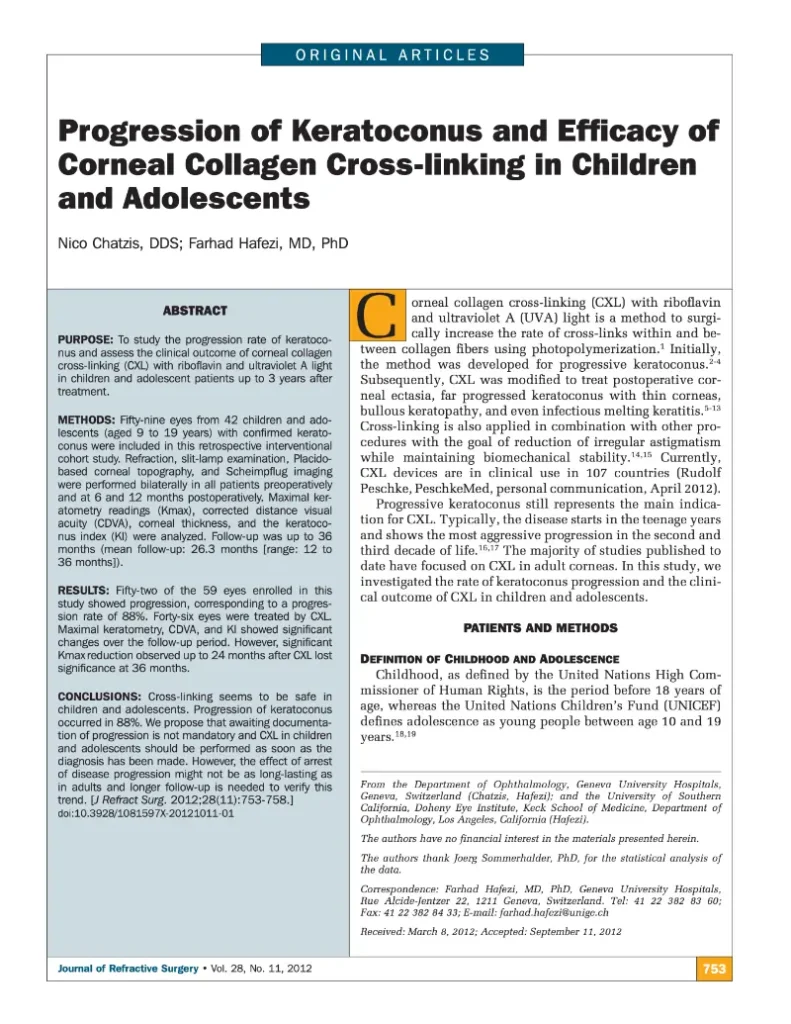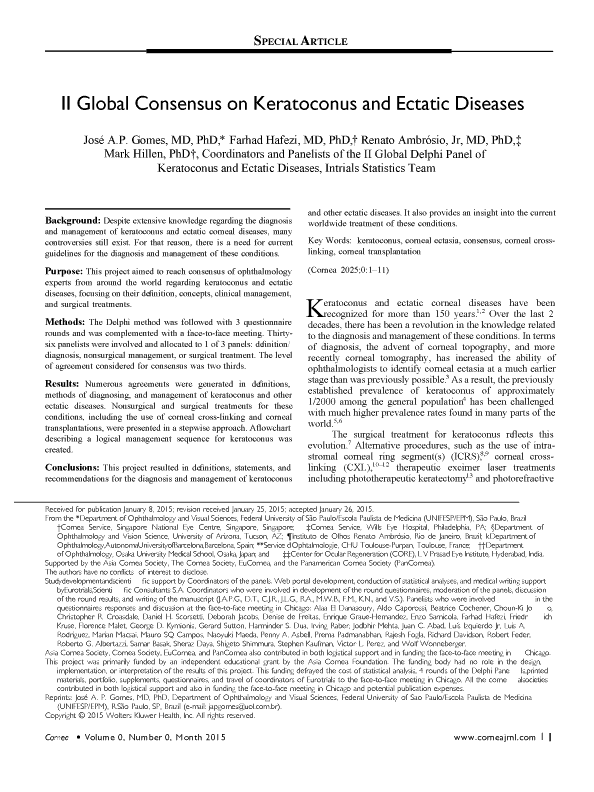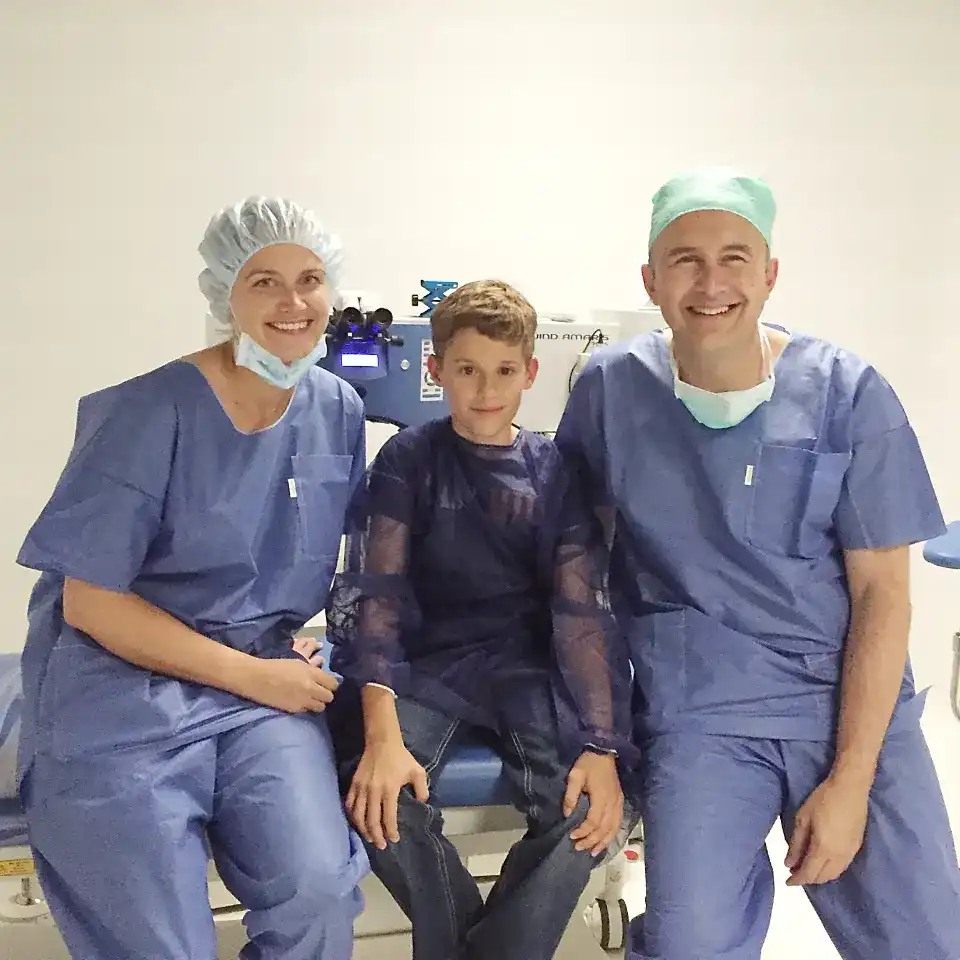Keratoconus and other corneal thinning diseases can develop early in life, sometimes as young as 3 to 4 years old. Detecting the condition early is crucial because progression can be much faster and more severe in children and teens compared to adults.
Warning Signs to Watch For:
Today, modern devices like the MS-39 allow for early screening and accurate diagnosis in young children.
In 2012, Dr. Farhad Hafezi and colleagues recommended treating keratoconus in children immediately upon diagnosis rather than waiting. This advice is now supported by a new global consensus involving over 90% of leading experts worldwide.
Delaying treatment can lead to rapid worsening of the disease, which may result in severe vision loss. Early cross-linking often leads to stronger improvements and better long-term outcomes.


Local anesthesia is used, generally starting from age 9 or 10, to keep the procedure comfortable.
Two main techniques are available:
Epi-on (transepithelial) CXL – The surface layer of the cornea stays intact. This is ELZA’s preferred method for children because it is less painful and promotes faster healing.
Epi-off CXL – The epithelium is removed to allow deeper riboflavin penetration and stronger treatment. ELZA also offers a new high-fluence protocol (10 J) that is very effective.
The choice between epi-on and epi-off depends on careful assessment of risks and benefits for each child.
At ELZA Institute, we are leaders in advanced, child-friendly CXL techniques, combining scientific excellence with compassionate care to protect young patients’ vision for life.

Get in touch
During office hours.
Email us.
Make an appointment, and come to see us.
Thank you for writing a review on google.
Contact us here, we will get in touch with you.
Zoom online consultation for our international patients.
Contact us here, we will get in touch with you.
Contact us here, we will get in touch with you.
Stay informed & get the newsletter
You have successfully joined our subscriber list.
Newsletter abonnieren & informiert bleiben
Sie haben sich erfolgreich in unsere Abonnentenliste eingetragen.
Bitte bestätigen Sie Ihr Abonnement, indem Sie auf den Link in der E-Mail klicken, die wir Ihnen gerade geschickt haben.